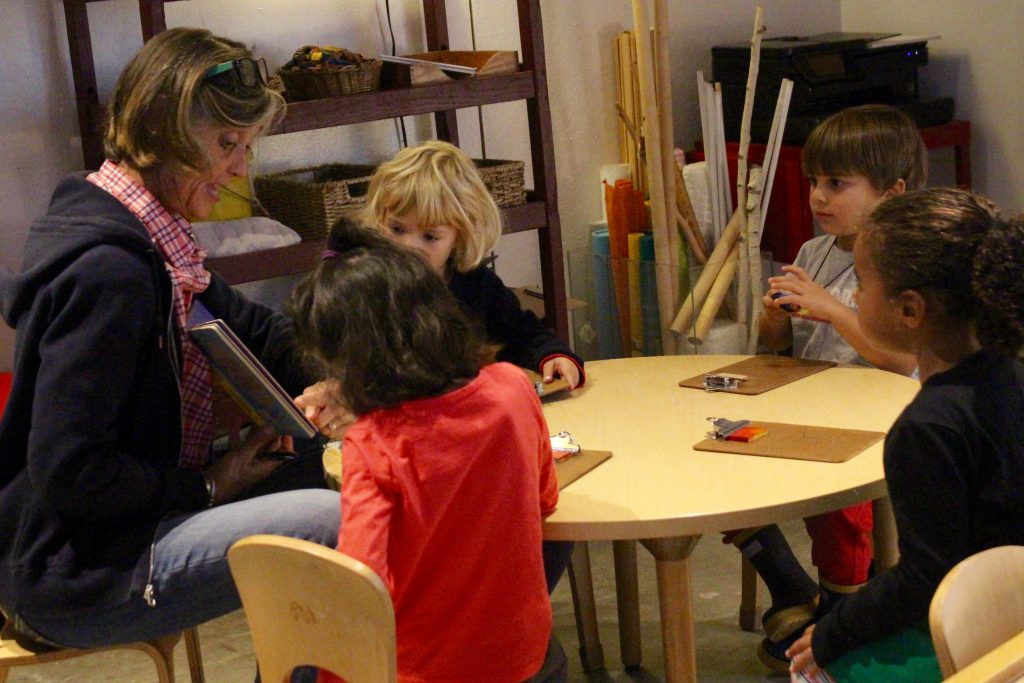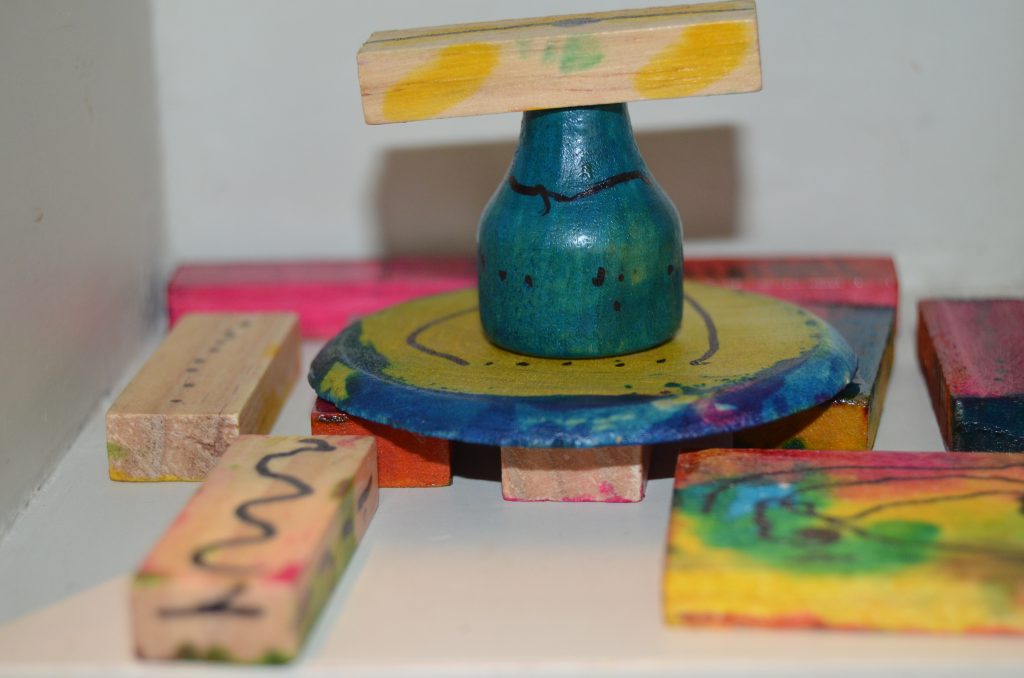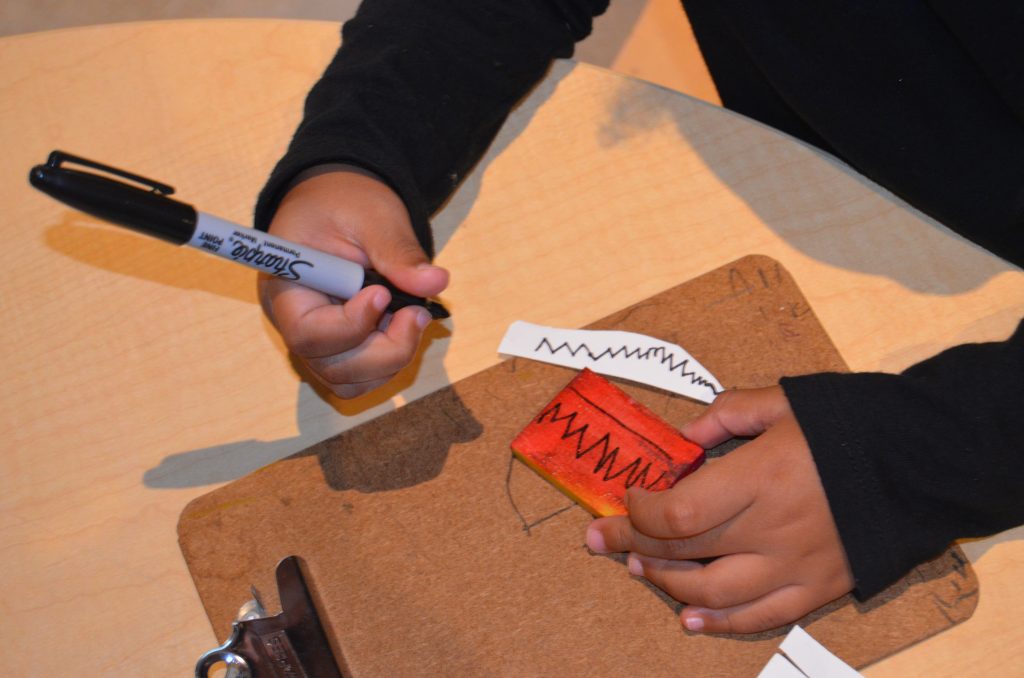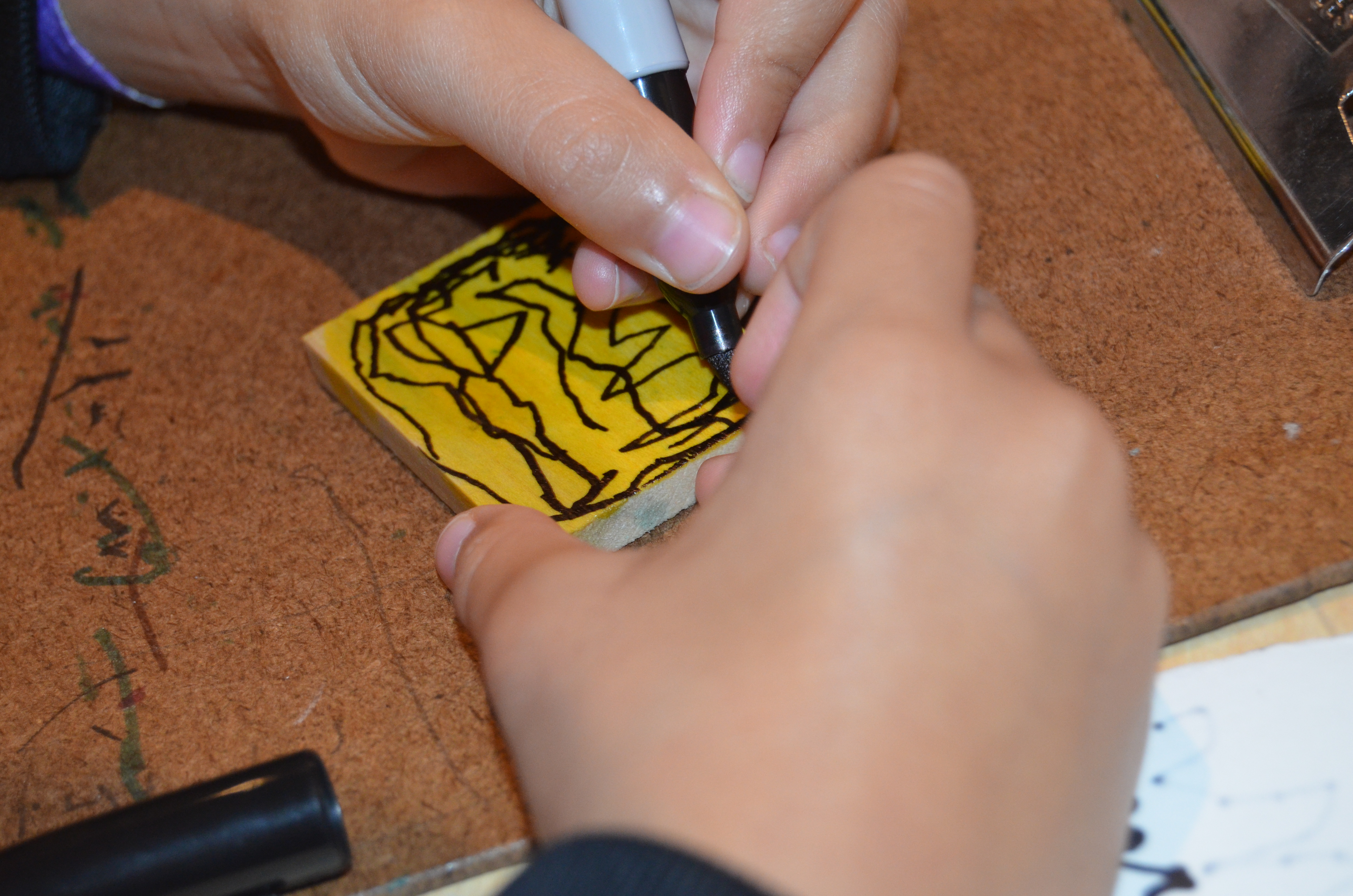At Lincoln Nursery School we value slowing down and moving at a pace that leaves room for listening—listening in a broad sense—with our ears, hands, eyes, nose, and mouth. Listening to understand, taking time to reflect on what we are sensing. How do we listen to both the physical and social worlds? How do we listen to materials? What are they telling us? A slower pace allows us to look back and reflect to inform the way we move forward. Giving pause, we challenge the feeling that sometimes bubbles up of a need to rush ahead. We practice replacing reactiveness with responsiveness. We honor children's meaning making—their learning—when we give time for their thinking before moving on to the next experience, the next exploration.
SMALL GROUPS allow we teachers to challenge the children to approach materials and each other in a new way, with a different way of being. What will happen when we mix two colors together?
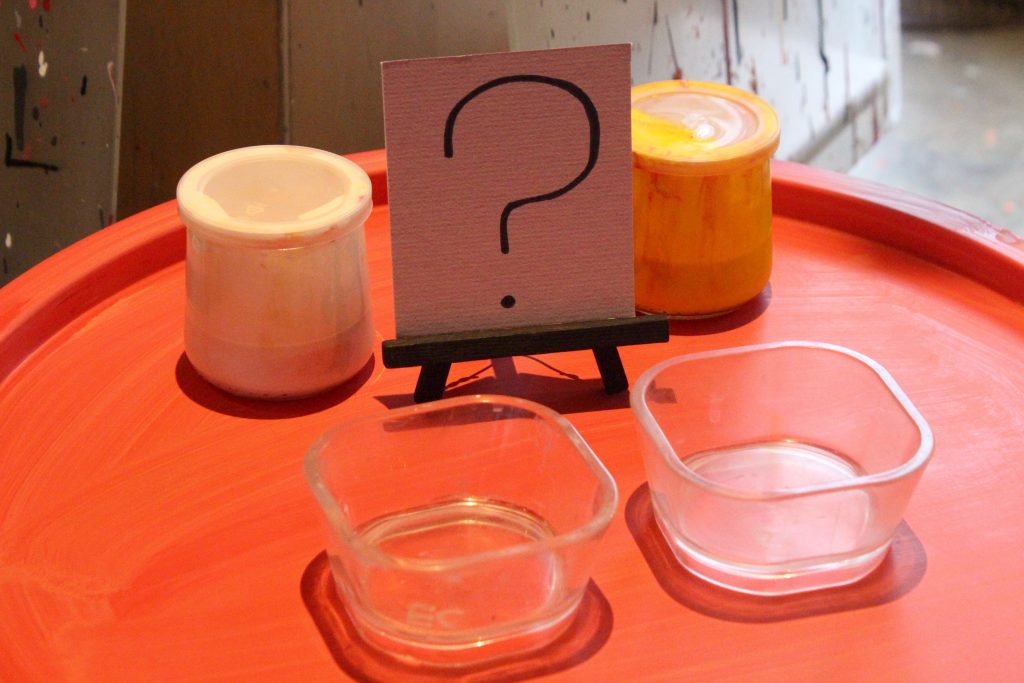
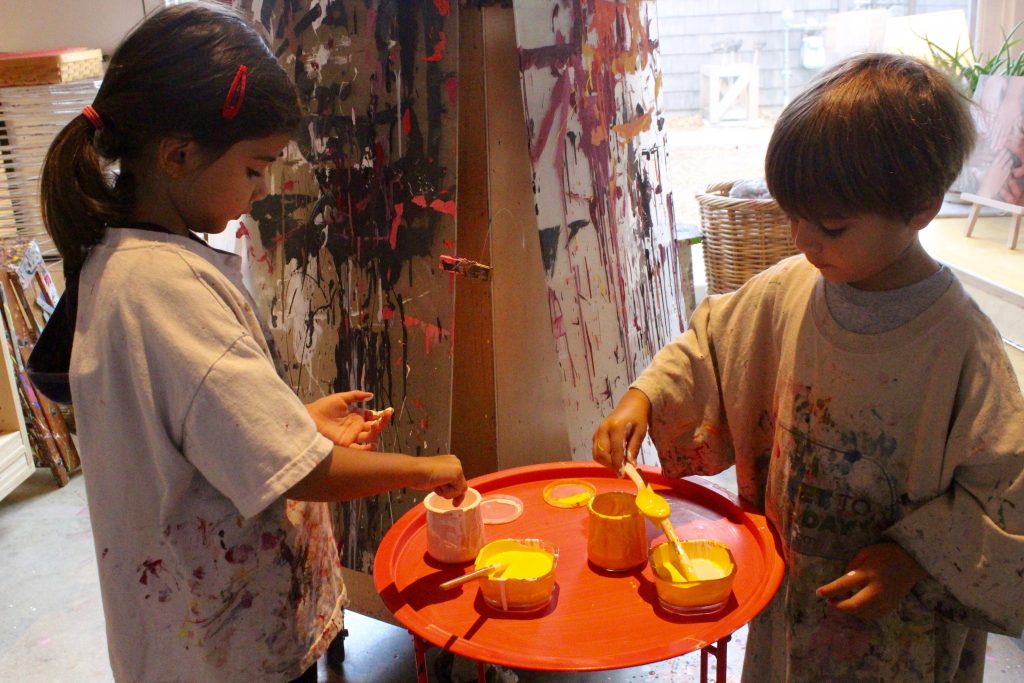
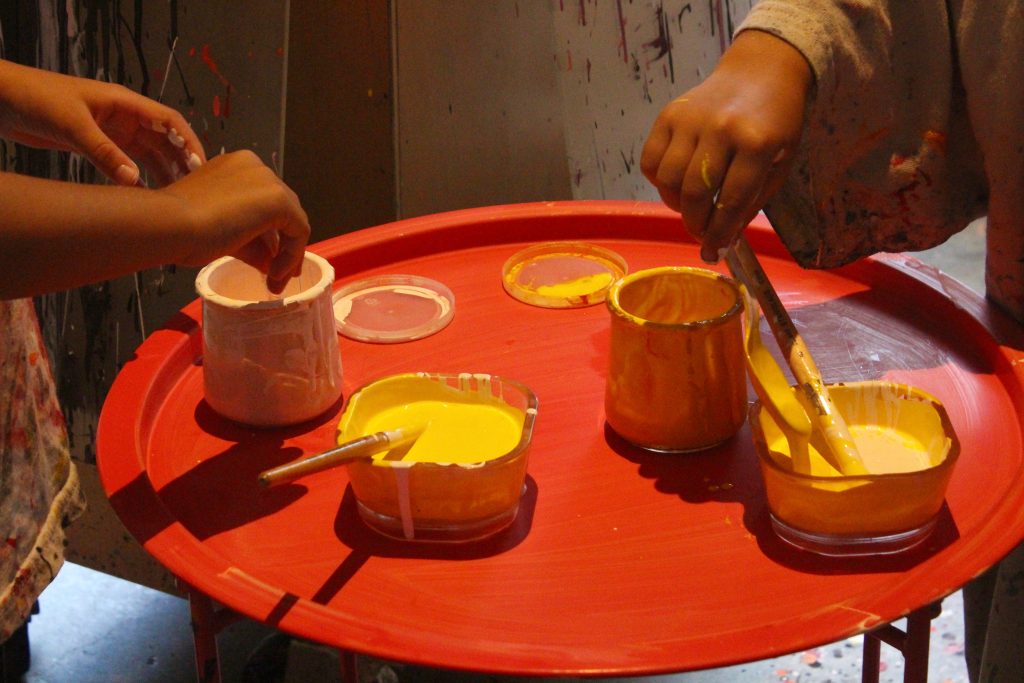
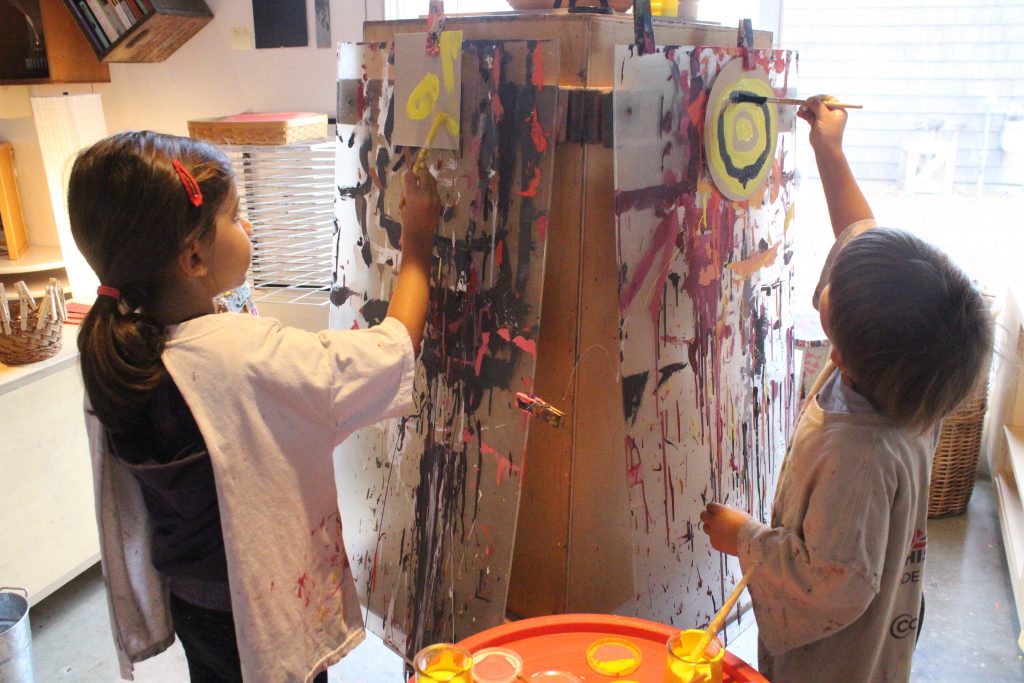
Mine won’t change because it’s not mixed. AVIA
Mine’s changing. It’s changing colors because if you put two colors on different colors, they’ll change. MARKY
It’s turning into sun! It’s still yellow. It’s a different kind of yellow. Sun is like that. While mixed with yellow usually turns into sun yellow. AVIA
I heard a bubble! I heard another one! MARKY
I already mixed a lot of white. I wonder if it will turn the same as Marky’s. AVIA
Once I added yellow I added a lot of white. I mixed it so much it like disappeared. AVIA
We made the same color! MARKY
REPETITION allows us to look again with a new gaze, reflecting on our past experience with a material, person, or place. How do we gain an understanding of storytelling and reading as we retell Henny Penny?

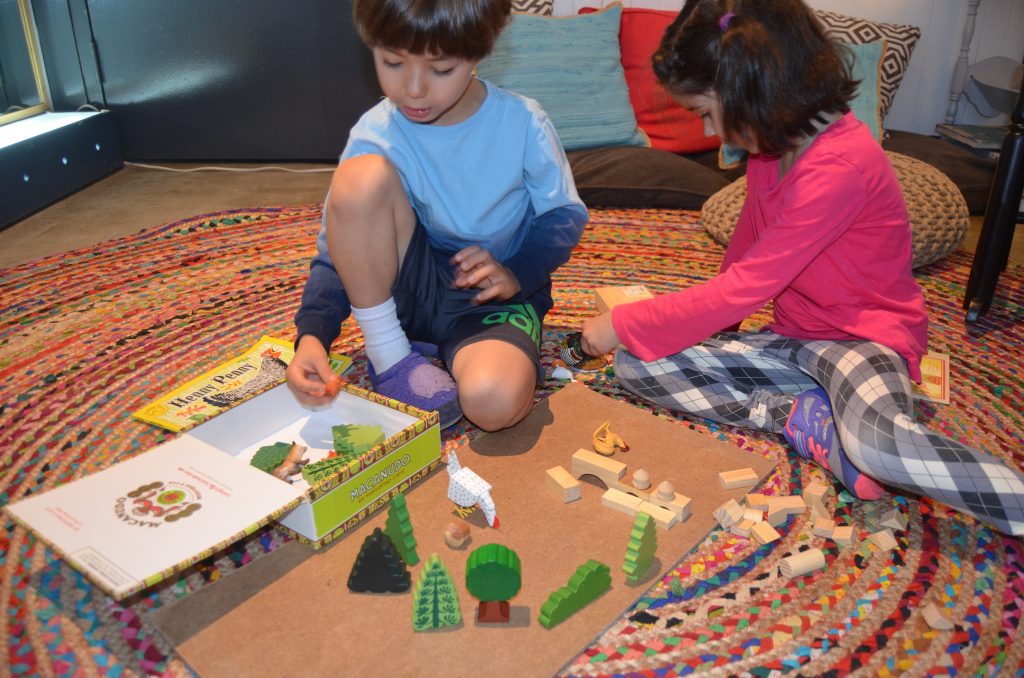
So they went along and they went along until they met, Cocky Locky. JOSEF
Where are you going Henny Penny? HELEN
I’ll make the den. It will be behind the trees. ELLIOTT
I’m making the palace. SOPHIE
And then the acorn fell. BONK! The sky is falling! (laughter) ELLIOTT
REVISITING a material or place allows us to encounter our environment in different ways, with different goals in mind, with different feelings, with different experiments, making new meanings, taking on new challenges, and deepening our understandings. How do we construct knowledge and communicate knowledge as we come to know the tools in our studio?
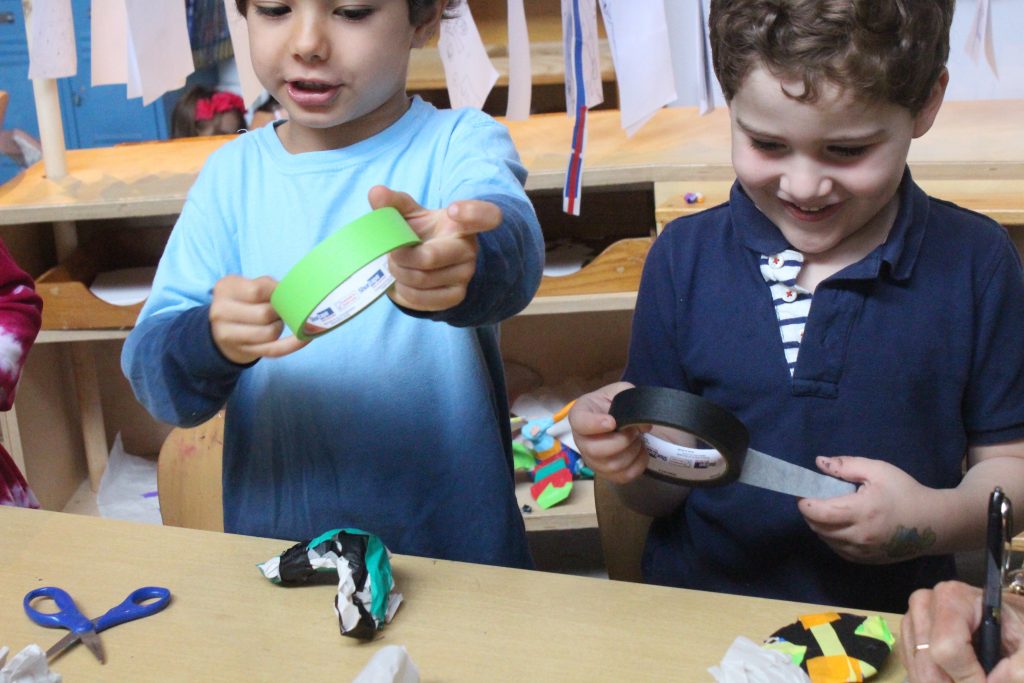
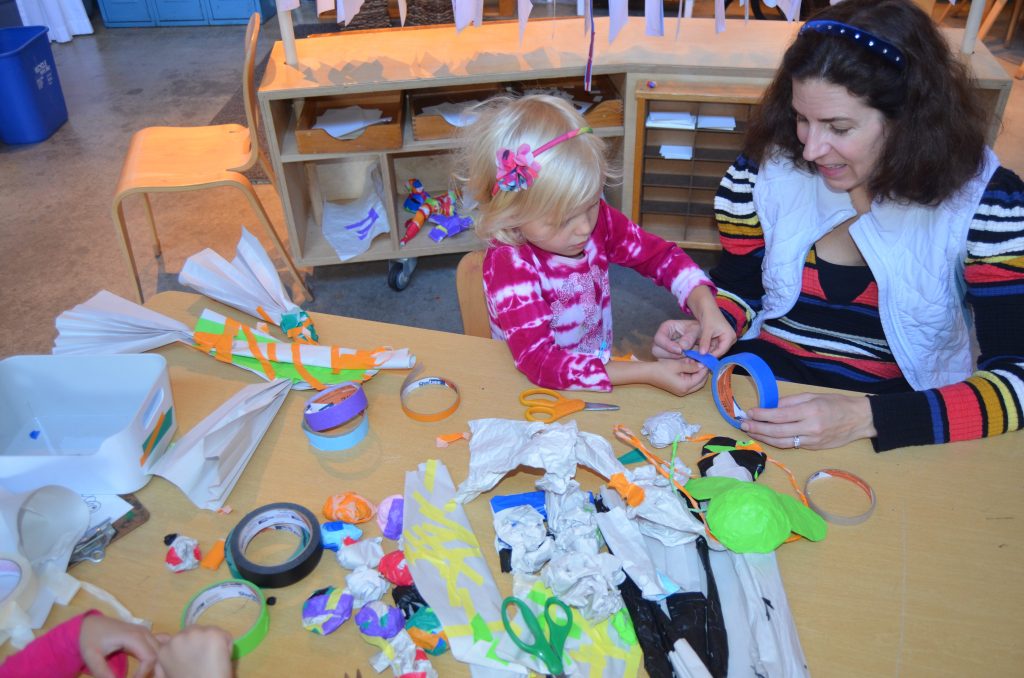
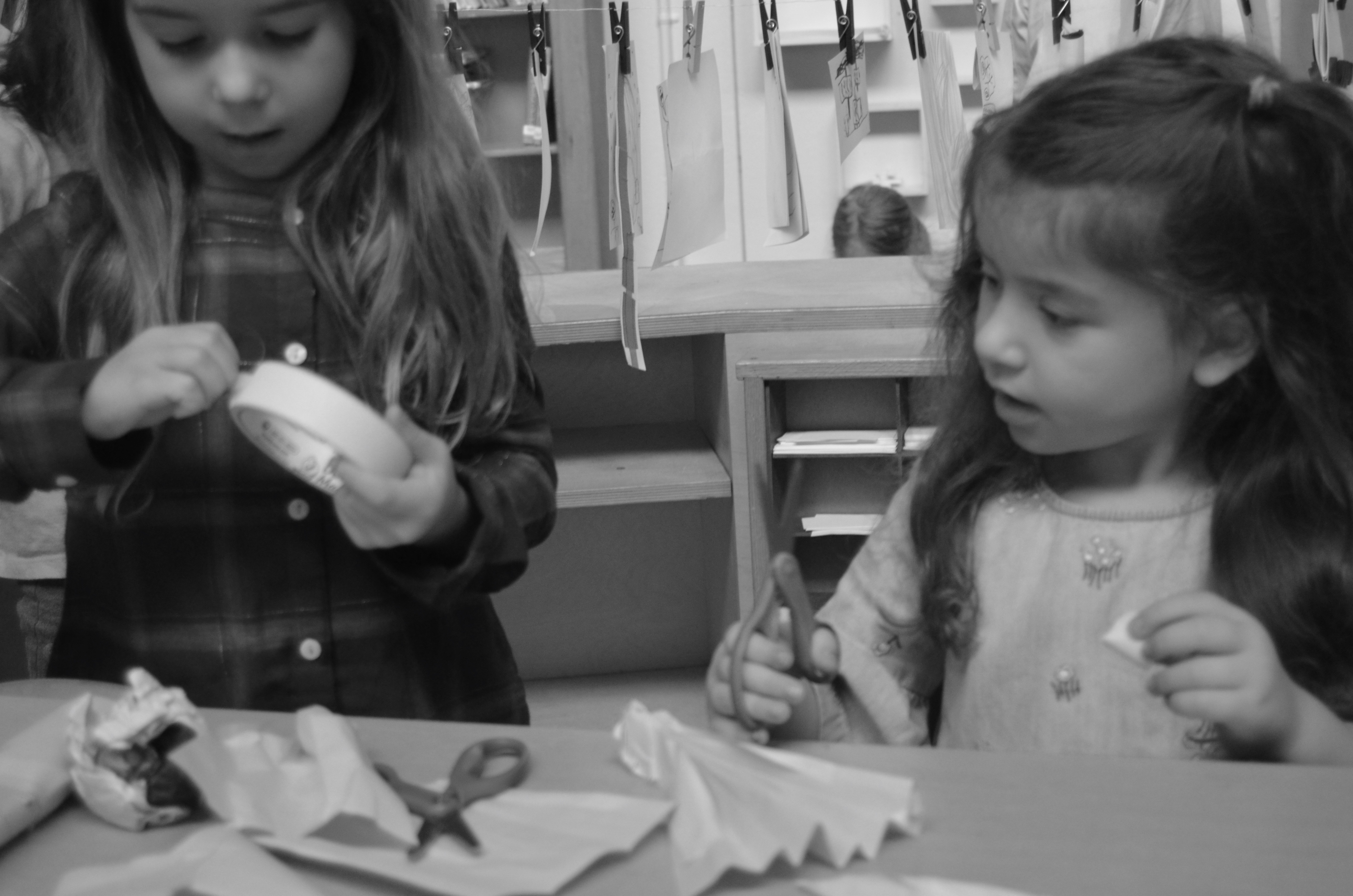
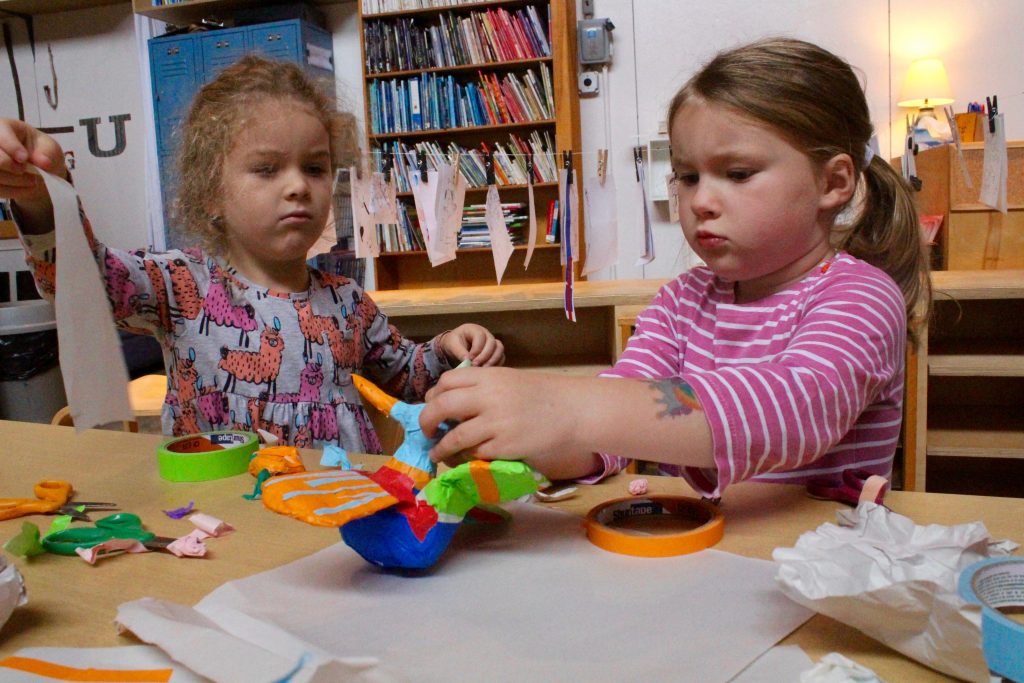
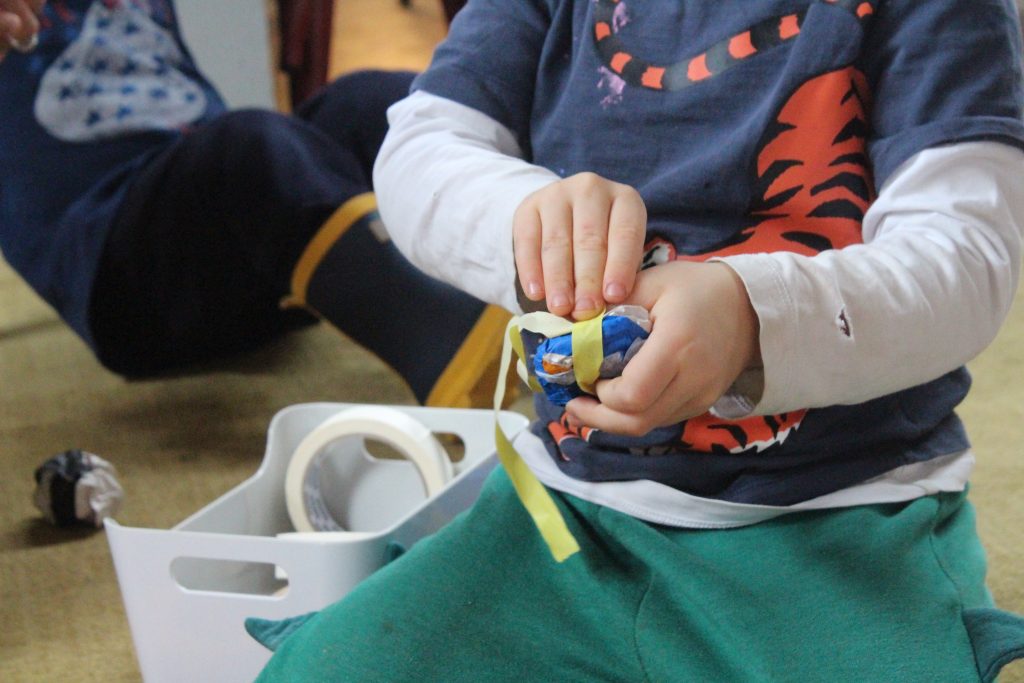
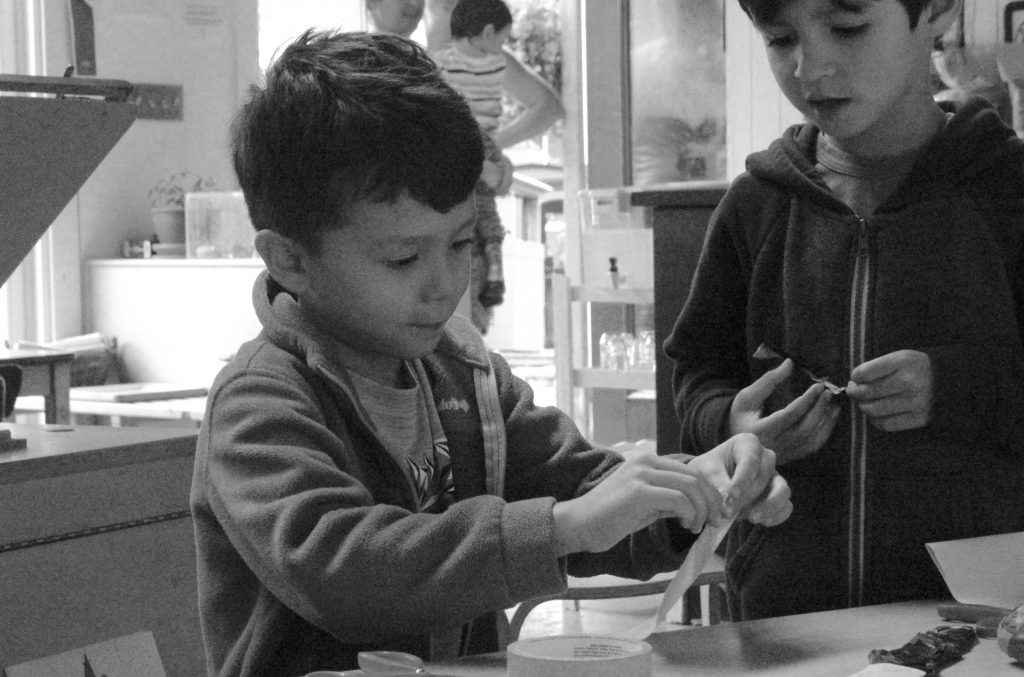
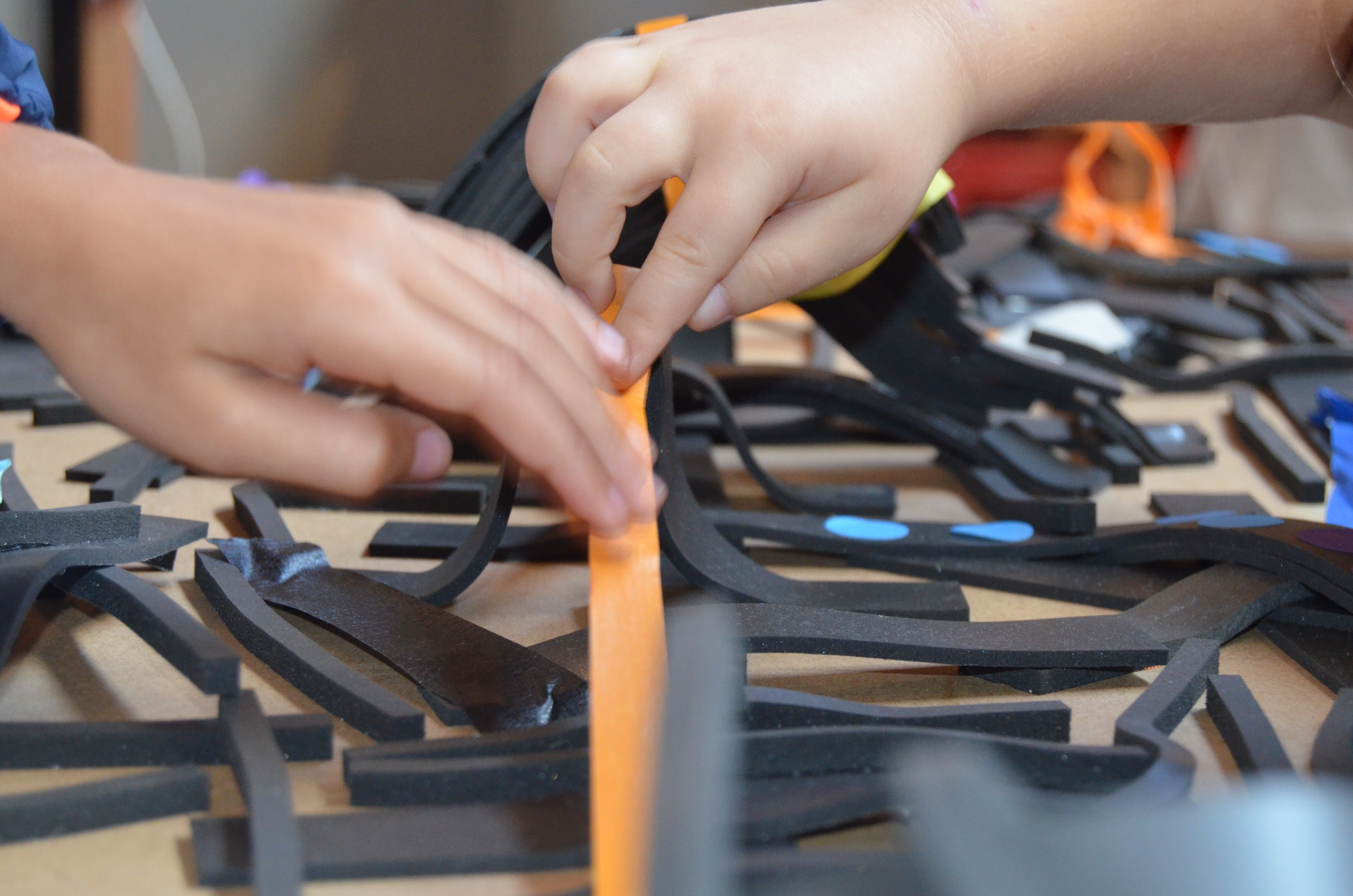
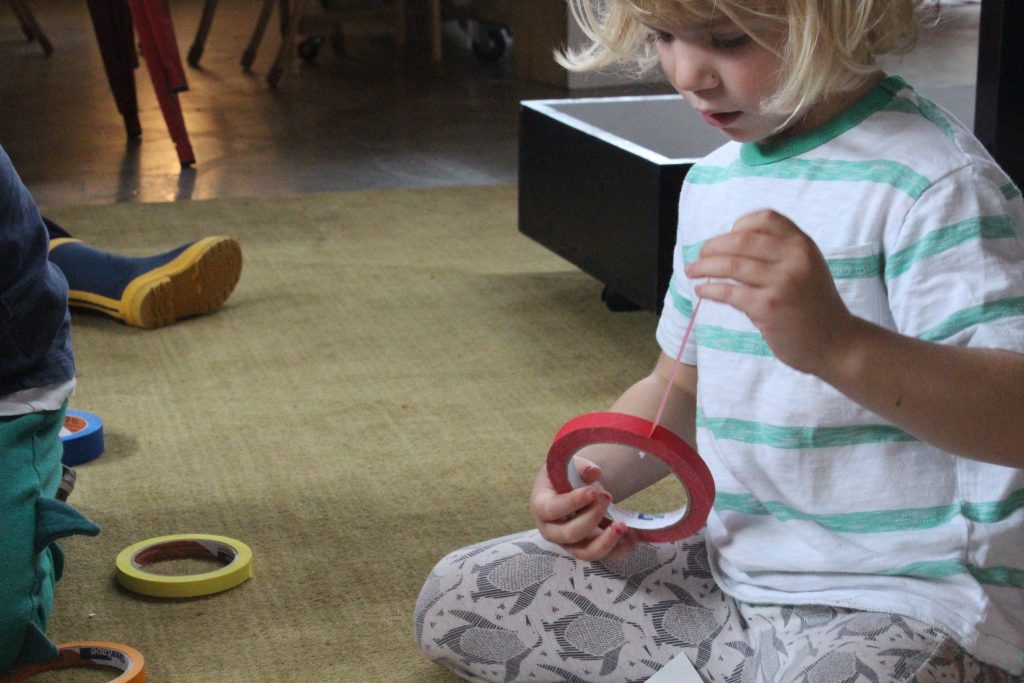
You can just crumple it (tape) on the paper, then it feels really good…If we scrumpled something under it, then you could feel it…I noticed something else about the tape, you can cut it when it’s on [the paper]. VIOLET
Crumple it up and make the tape tiny. When it’s tiny, like when it’s a ball. CALLEN
And it’s so long it can still cover the bottom. NICO
This tape really wants to roll again. PARKER
Lot’s of layer make it hard. JOSEF
Squishy and hard. MARKY
My little red ball is inside this ball. ELEANOR
I know how to attach it! HELEN
PROVOCATIONS offer a new way of seeing as they are questions that are asked verbally, through the design of the environment or the shifting and positioning of materials. With new encounters and questions we grow to see new possibilities, growing the potential we envision in a material, a place, or a classmate. What will happen if we paint these blocks? What will happen if we add line? What do we see in a projected image in our studio? How do ideas travel through our message board?
